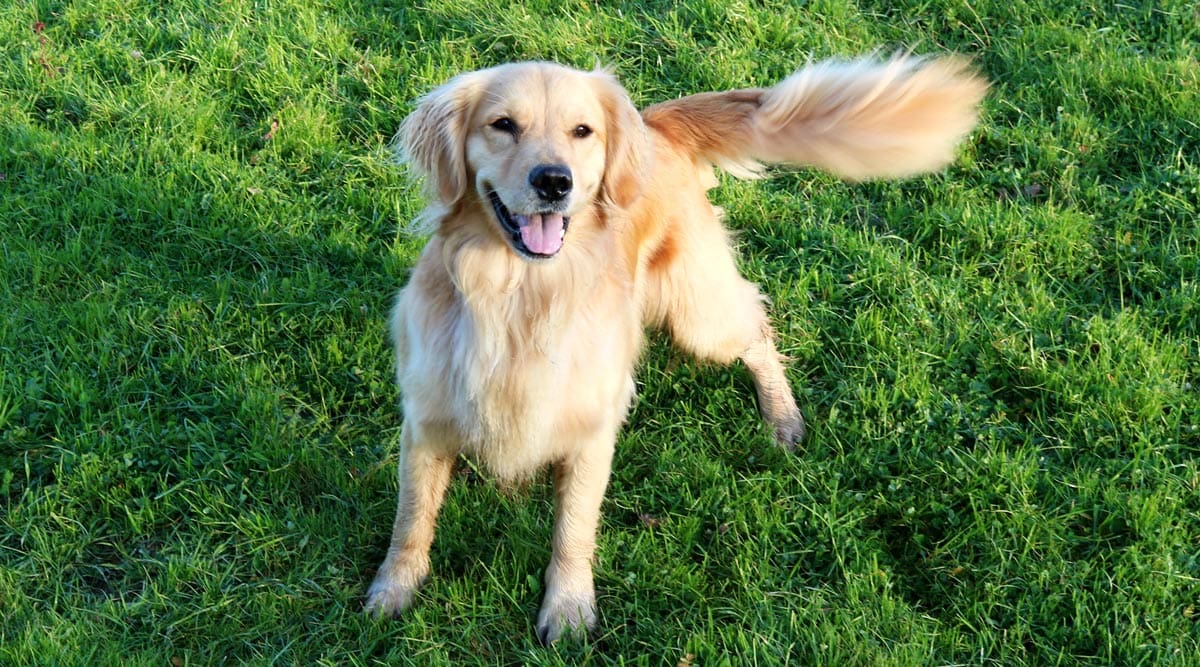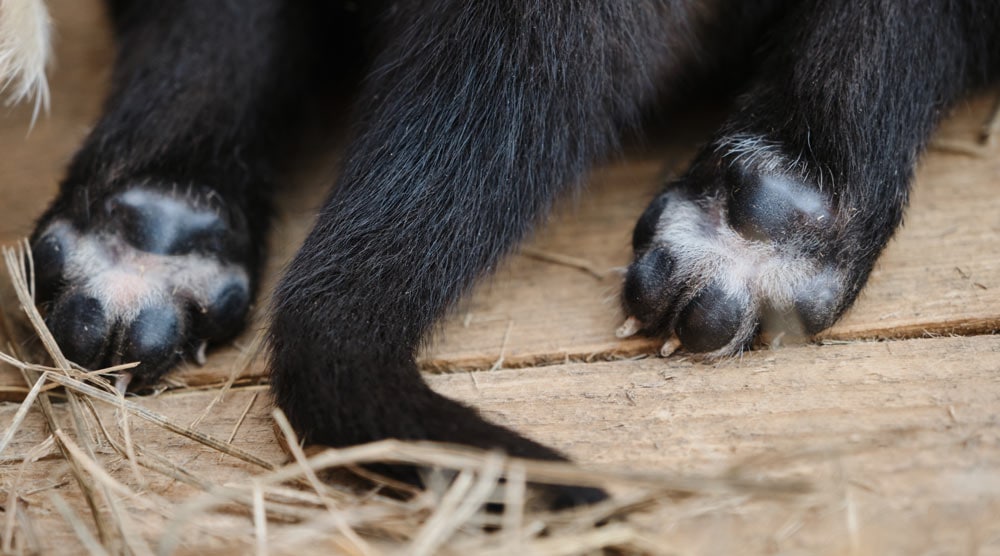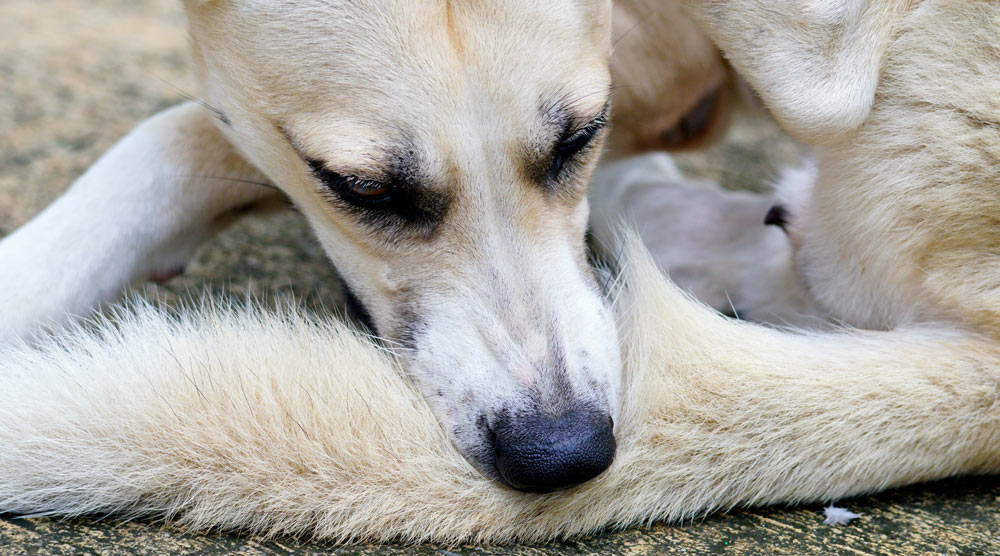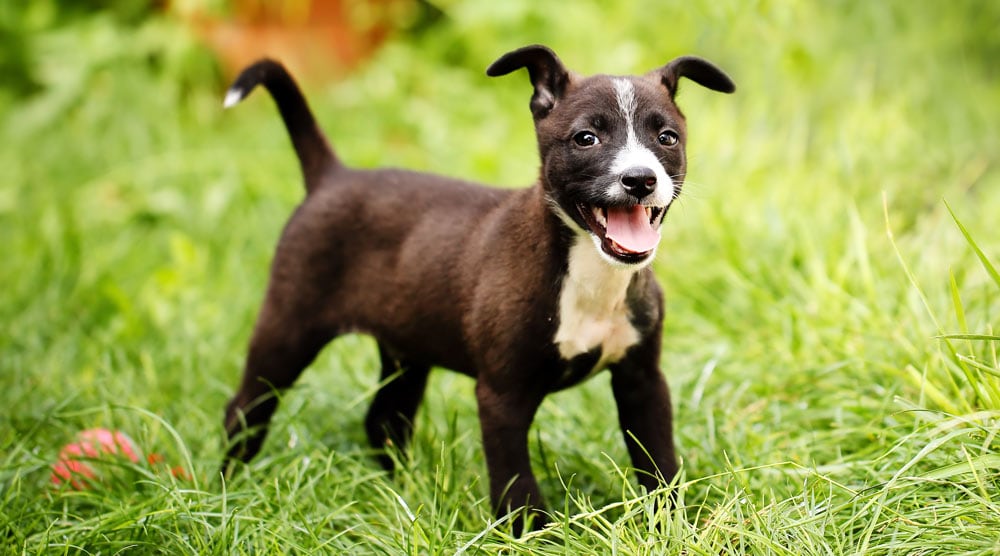Ever noticed your dog’s tail wagging more to the right or left? It’s not random – your pup’s wag direction can hint at their emotions and feelings about a situation!
In this article, we’ll discuss the differences between right and left tail wagging. We’ll also give you tips for recognising tail direction, which isn’t always easy. Let’s get started!
Contents
Tail Wagging Direction Changes Depending On The Dog’s Emotions
Contrary to popular belief, tail wagging is not just a sign of happiness. Wagging is a complex language that allows a dog to show a range of emotions, from happiness to fear.
The key is to look at how the tail wags relative to the dog’s neutral tail position. This neutral position varies depending on the breed, which is why reading a dog’s tail body language is more difficult with unfamiliar dogs.
A little-known fact is that a dog’s tail wagging direction can indicate their emotional state.
If the dog’s tail wags more to the right, they’re likely feeling happy or secure. In contrast, wagging to the left often indicates negative emotions. The stronger the emotion, the more noticeable the wagging bias.
Let’s take a closer look at how direction might indicate how your dog is feeling.
Right Tail Wagging Suggests Positive Emotions
When your furry friend’s tail wags to the right, it typically means they’re experiencing positive emotions. This wag direction is most common when they meet familiar humans or dogs.
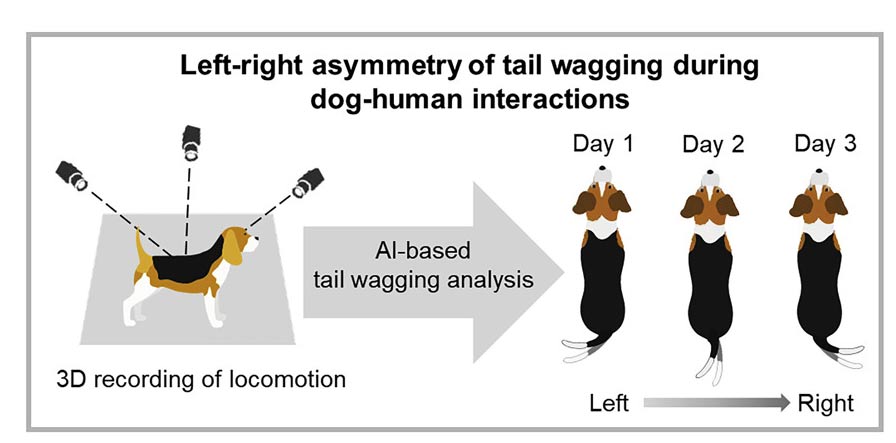
A recent study confirmed this by examining tail wagging during dog-human interactions. In just three days of meetings, a dog’s tail moved from a left-bias to right-bias when wagging, showing that the dog quickly became more comfortable with the new human (see the diagram above).
It’s vital to remember that wagging direction is just one part of the canine body language picture though. You need to consider the dog’s whole body language, including posture, tail position, wagging speed, breadth, and facial expressions.
Left Tail Wagging Suggests Negative Emotions
In contrast to a right-biased tail, a tail wagging more to the left could show negative emotions.
Left wagging is common when a dog encounters an unfamiliar human or dog. It’s often accompanied by other signs of stress, such as lip licking or gaze averting.
Why Do Dogs Wag Their Tail To The Right Or Left?
The variation in wagging direction is probably caused by a dog’s brain having two hemispheres. Dr. Zhang, who led one of the original studies into dog tail direction, explains:
“We speculate that tail wagging toward the left might be accompanied by right brain activation, while tail wagging toward the right side may be accompanied by left brain activation in the prefrontal cortex.”
This effect is due to the brain hemispheres being linked with different emotions.
The left brain hemisphere is associated with positive emotions, but it controls the right side of the dog’s body. This causes a rightward wag during positive moments. On the other hand, the right hemisphere—linked with negative emotions—controls the left side of the body.
Note: Tail wagging direction isn’t a conscious decision by the dog. While dogs do have some control over their tail movements, subtle body language signals happen subconsciously.
How to Identify Right or Left Tail Wagging in Dogs
Now we’ve established the science behind wag direction, how can you identify right or left tail wagging in your dog?
The best approach is to stand behind your dog, facing the same direction as them. The tail will wag back and forth, but look closely to see if it’s wagging more strongly to one side. If it’s to the right, your dog is likely feeling positive about the situation. If it’s to the left, they could be stressed or anxious.
Detecting this might require some practice. A good starting point is to observe your dog when they greet someone familiar, as you’ll almost certainly notice a rightward wagging bias. With time, you’ll be able to recognize tail wagging direction in other situations.
To help, here’s what The Dog Clinic’s resident dog trainer Rebecca Morello says about tail direction:
It can be really hard to identify which direction your dog’s tail is wagging, especially if it’s fast. Try standing so you can see your dog from behind and notice which direction the base of the tail returns to. You can also video your dog in certain situations and play it back in slow motion.
Rebecca Morello (IMDT, ADUK)
Keep in mind that a dog’s tail type can affect whether wagging direction is noticeable. With some dogs, especially those with corkscrew or very short tails, determining the wagging direction can be almost impossible.
Important Warning: Tail wagging is just one piece of the puzzle. To fully understand a dog’s emotions, you need to consider their overall body language and environment. Don’t rely solely on tail direction.
Can Other Dogs Notice Tail Wagging Direction?
Yes, dogs can detect if another dog’s tail is wagging to the right or left. In fact, another dog’s tail wagging direction can directly impact their emotional state!
For example, a recent study found that dogs tend to relax when they see another tail wagging to the right. In contrast, seeing a left-wagging tail can induce stress.
This is an impressive finding, but it probably shouldn’t surprise us. Dogs have excellent vision for detecting movement. Over thousands of years, they’ve evolved to pick up on subtle body language signals from other dogs, as this can prevent unnecessary conflict.
How Else Do Dogs Show Emotion Through Tail Wagging?
Wagging direction is just one part of tail body language. Some other important examples include:
- Tail position. A tail pointing up often signals excitement or alertness, while a low tail suggests fear or anxiety. Neutral tails indicate relaxation or contentment. But remember, different breeds have different neutral positions.
- Tail stiffness. A tense tail can mean a stressed or aroused dog. On the other hand, a loose, swaying tail likely suggests relaxation.
- Wagging speed. In general, the quicker the wag, the stronger the emotion—be it joy or fear.
Want to learn more about tail signals? Check out our comprehensive guide to dog tail meanings. You’ll be fluent in “tail talk” in no time!
Summary
As we’ve discussed, a dog’s tail wagging direction can tell you a lot about how they are feeling. Right-wagging often indicates positive emotions or familiarity, while left-wagging is linked to negativity or anxiety.
Remember, you can’t rely on just tail direction though. Tail position, stiffness, and wagging speed, along with your dog’s overall body language, are all important when judging how they are feeling.
Do you have any questions about why your dog’s tail wags to the right or left? Please let us know in the comments section below.
